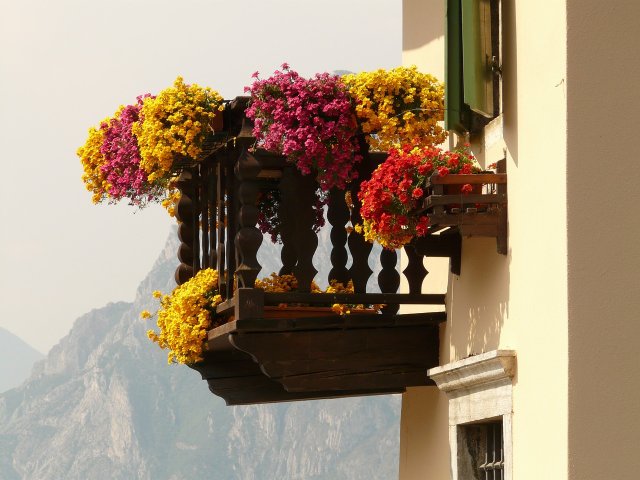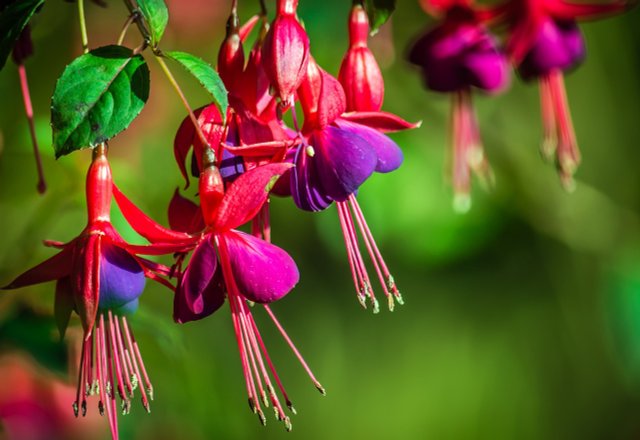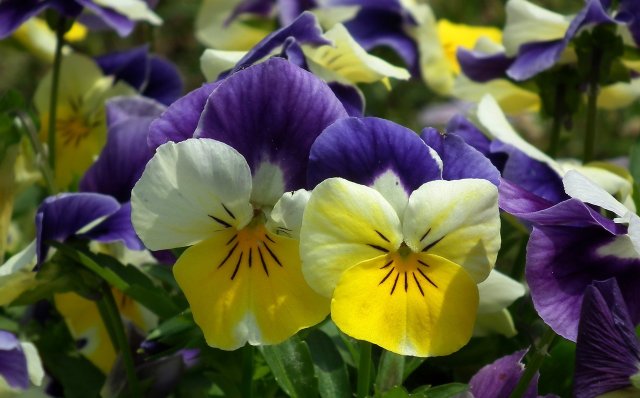A lush and vibrant balcony garden can transform your outdoor space into a peaceful retreat, regardless of whether it’s bathed in sunlight or shaded for most of the day. However, not all plants are created equal, and choosing the right low-maintenance options for your balcony can make all the difference in your gardening experience. In this article, we’ll explore a variety of plants that thrive in both sunny and shady conditions, making it easier than ever to create a stunning balcony garden without the constant upkeep.
Sunny Spots:
- Succulents: For hot and sunny balconies, succulents are a top choice. They’re hardy, drought-tolerant, and require minimal maintenance. Varieties like echeveria, sedum, and agave add a touch of the desert to your urban space.
- Petunias: These colorful annuals thrive in full sun and come in a range of hues, making them a cheerful addition to your sunny balcony. They require regular watering but are otherwise low-maintenance.
- Geraniums: Geraniums are renowned for their vibrant blooms and are ideal for sunny spots. They do well in containers and are relatively drought-tolerant, requiring infrequent watering.
- Herbs: Herbs like rosemary, basil, and thyme love the sun and thrive in containers. They not only add flavor to your culinary creations but also provide a pleasant aroma.
Shady Corners:
- Ferns: Boston ferns and maidenhair ferns are well-suited for shady areas. They thrive in the filtered light and add a touch of elegance to your balcony.
- Hostas: Hostas are prized for their lush foliage and shade-loving nature. Their low-maintenance requirements make them a popular choice for balconies with limited sunlight.
- Begonias: Begonias offer vibrant flowers and attractive foliage, making them an excellent choice for shady areas. They require minimal care and bloom throughout the summer.
- Peace Lily: Peace lilies are adaptable houseplants that do well in low light. They not only purify the air but also produce elegant white blooms.
General Tips for Low-Maintenance Balcony Gardening:
- Choose Self-Watering Containers: Self-watering containers can help maintain consistent soil moisture, reducing the frequency of watering.
- Use High-Quality Potting Mix: Invest in good potting mix with proper drainage to ensure your plants receive the right balance of air and water.
- Regular Deadheading: Remove spent flowers to encourage continuous blooming and maintain a tidy appearance.
- Fertilize Sparingly: Most low-maintenance plants don’t require frequent feeding. Use a slow-release fertilizer or organic compost when necessary.
- Monitor Pests: Keep an eye out for pests and take action as needed. Neem oil or insecticidal soap can help keep infestations under control.
- Rotate Your Plants: If your balcony has both sunny and shady spots, rotate your plants occasionally to ensure even growth and avoid overcrowding.
By carefully selecting low-maintenance plants that suit the specific conditions of your balcony, you can create a beautiful and relaxing outdoor space without the need for constant attention. With the right choices and a bit of occasional care, your balcony can flourish, providing you with a green oasis to enjoy year-round.

If you have a balcony, you can bring some greenery into your home with balcony plants. We’ll show you plant varieties for sunny and shady balcony spots.
Contents
Plants for sunny balconies

The south balcony gets the most sun and is ideal for many plants. Lavender and daisies are popular balcony plants and thrive in such a sunny location. This is because they originate from warm climate regions. They can stand the blazing sun well, but depend on plenty of water. In summer, plants should be watered daily, preferably in the morning and evening. Sun-loving balcony plants include:
- Clematis: This climbing plant works well as a privacy screen because it grows toward the sun. Plant the clematis so that the bottom 30 inches are in the shade.
- Strawberries: With good watering and enough fertilizer, strawberries feel very comfortable on a sunny balcony. They are very easy to care for. Plant different strawberry varieties with different harvest times to provide fresh fruit throughout the summer.
- Geraniums: Caring for geraniums is easy: they just need adequate watering and fertilizing. But they also tolerate short dry spells well.
- Daisies: Daisies do well with high temperatures and lots of sun. However, their soil should always be kept moist.
- Petunias: Petunias are ideal for south-facing balconies because the more sun they get, the more blooms there will be. They do especially well in balcony boxes along the railing. Care for petunias with plenty of water and fertilizer.
- Tomato: In large pots with nutrient-rich soil, tomatoes grow quickly on a sunny balcony and produce a bountiful harvest. Direct sunlight and heat do not bother them. However, you need to fertilize the tomatoes well and water them generously.
Here you can find more plants that are suitable for the south balcony: Plants for full sun: These plants are easy to care for and not sensitive.
There are also balcony plants that cope well with temporary drought. So it’s not immediately devastating if you forget to water them once. Among them are:
Mediterranean plants, for example:
- Lavender: there are many reasons to plant lavender. It is undemanding to care for, loves the sun and smells like a vacation in France. Its scent drives away pesky insects. In addition, it needs only moderate watering and forgives even a short period of drought.
- Rosemary, laurel and thyme: These plants may also be placed in a common balcony box due to their similar requirements for the location (preferably sunny, a little water and fertilizer), even together with the equally low-maintenance lavender.
Easy care balcony plants in the shade

Balconies facing north are in the shade, as well as balconies that do not get the sun due to trees or other buildings. The selection of plants for shady balconies is much smaller than for sunny ones. Still, that doesn’t mean a balcony without sun has to be without balcony plants – you just have to choose the right ones:
- Astilbe: Some varieties of astilbe can grow up to three feet tall. They do well in single pots. Low-growing varieties, however, are also suitable for box planting.
- Begonia: Even in adverse conditions, begonias have a tireless drive to bloom. They don’t tolerate sun and heat very well and can store a lot of water in their leaves. In addition, begonias can be easily overwintered. They are easy to care for and come in many varieties and colors.
- Boxwood: Boxwood is particularly suitable as a screen on a shady balcony. In addition, it requires little care – a little watering is all that is needed.
- Fleißiges Lieschen: This balcony plant develops its full flowering power only in semi-shady to shady locations and is fairly undemanding in terms of care.
- Fuchsia: Perfect for shady balconies is also the fuchsia. It thrives and blooms even without much light. Regular watering will keep it blooming all summer long. In winter, you just need a cool, dark location to overwinter the fuchsia.
- Bellflower: The balcony plants grow quickly and form many flowers early. Therefore, bellflowers need a lot of nutrients through fertilizer. They do not like a lot of sun and heat, so a partial shade to shady location is ideal.
- Hydrangeas: Plant hydrangeas in a pot or balcony box. Their lush flower umbels are a colorful addition to a partial shade to shady balcony. Their soil should always be well moistened, but not waterlogged.
- Watering Heart: Plants do very well in window boxes. They should be protected from the wind in the shade, need a little water and fertilizer from time to time.
Balcony plants for winter

When the summer comes to an end, the balcony also becomes more empty and colorless. This is because most classic balcony plants do not like cold at all. However, this does not mean that the balcony must be completely bare in the winter. There are also hardy balcony plants: they can stay on the balcony in colder temperatures and in snow, ice and wind, if you protect them from the cold.









